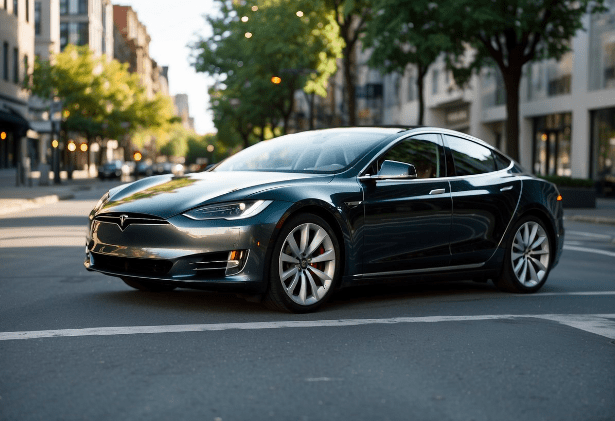Tesla Self Drive Accidents

Advancements in automotive technology have brought forward various features aimed at improving safety and convenience for drivers. Among these innovations, Tesla’s Autopilot and Full Self-Driving (FSD) capabilities promise to revolutionize the way we travel. They are designed to handle tasks such as steering, accelerating, and braking under certain conditions. However, the implementation of such systems has also brought about a new set of challenges and concerns. The increase in the number of crashes involving Tesla’s Autopilot and FSD technology has sparked debates on the safety and readiness of self-driving vehicles.
As Tesla’s self-driving technology proliferates, with a significant number of vehicles now equipped with these features, there is a growing body of data concerning their safety record. Some reported incidents have raised questions about the role of Autopilot and FSD in traffic collisions. Notably, a series of accidents have occurred where the Tesla’s self-driving features were reportedly engaged, including a Tesla employee’s fatal crash and an eight-car pileup in California. These incidents underscore the complexities and risks associated with autonomous driving systems in real-world situations.
While Tesla asserts that its self-driving technology has a lower crash rate than vehicles operated by humans, the conversation around these systems is nuanced. The data and analyses of Tesla Autopilot crashes highlight the importance of understanding the limitations of current self-driving technology. This understanding is critical for ensuring the safety of all road users as the automotive industry continues its march towards more autonomous driving solutions.
Tesla’s Self-Driving Technology
Tesla’s self-driving suite, composed of Autopilot and Full Self-Driving (FSD) features, has significantly evolved but is not without controversy, especially regarding its safety record and public perception.
Evolution of Autopilot and Full Self-Driving (FSD)
Autopilot and FSD have undergone significant changes since their introduction. Initially, Autopilot offered assistance features like adaptive cruise control and lane-keeping. Tesla later introduced the more advanced FSD, promising full autonomy. Despite its name, FSD does not make a Tesla fully autonomous and still requires the driver’s constant attention.
Safety Features and Protocols
Tesla vehicles feature numerous safety protocols, including emergency braking, collision warnings, and lane departure avoidance. The company emphasizes that these features are designed to support but not replace an attentive driver. The system continuously updates, aiming to improve its ability to prevent a car accident and enhance road safety.
Regulatory and Certification Process
Tesla’s self-driving technology is under constant scrutiny by regulatory bodies. The deployment of features such as FSD is contingent on passing rigorous safety standards and receiving approval from governmental organizations. Tesla has faced challenges with regulators due to concerns over the safety and capabilities of its self-driving technology.
Public Perception and Media Reporting
Media reporting on Tesla’s self-driving technology is often polarized, affected by high-profile incidents and Tesla’s assertive marketing. There has been an uptick in crashes that coincide with the aggressive rollout of FSD. Contrarily, there are instances reported where Tesla’s technology has been exonerated in court. Public perception is thereby shaped by a mixture of skepticism, regulatory actions, and Tesla’s promises of innovation.
Analysis of Tesla Self-Drive Accidents
Tesla’s advanced Autopilot system has been a point of contention due to the number of accidents since its introduction. This section delves into the specifics of Tesla’s Autopilot-related incidents, notable case studies, and the subsequent impact on Tesla’s reputation and its market position.
Statistical Data on Incidents
Tesla vehicles equipped with Autopilot technology have been involved in several incidents since its deployment. A notable report highlights that there have been 736 crashes involving Tesla Autopilot since 2019. The introduction of the Full Self-Driving (FSD) mode saw a substantial scaling from approximately 12,000 to nearly 400,000 vehicles using the system.
- Total Autopilot Engagements: Data not provided
- Total Miles Driven on Autopilot: Data not provided
- Reported Incidents: 736 since 2019
- Fatalities: Notable cases with fatalities reported
Case Studies of Notable Accidents
One case that garnered significant attention involved a fatal Tesla Autopilot crash in Delray Beach, Florida. The incident occurred early in the morning, and despite Autopilot being engaged, the vehicle collided at high speeds. In another incident, a Tesla Model S, reported to be in “full self-driving mode,” malfunctioned and caused an eight-vehicle crash in San Francisco.
Impact on Tesla Brand and Market
The series of accidents has brought Tesla under intense scrutiny, affecting its market value and consumer trust. While the brand claims that its Full Self-Driving technology lowers the crash rate significantly, public perception is mixed. Analysts have noted a surge in Tesla “Autopilot” crashes and fatalities, bringing into question the safety of autonomous driving technology, which can have lingering effects on the brand’s image and sales.




